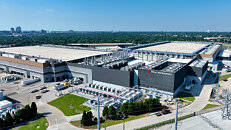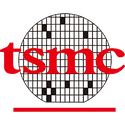China to Capture Nearly One‑Third of Global Chip Production by 2030
China is on course to become the world's leading semiconductor manufacturing hub by the end of the decade. Market research firm Yole Group predicts that by 2030, China will account for 30% of global foundry capacity, a sharp increase from its 21% share in 2024. This growth will position China ahead of Taiwan, which currently holds a 23% market share. In recent years, Beijing has committed vast public and private resources to domestic chip production. Last year, Chinese fabs processed 8.85 million wafers per month, marking an annual increase of approximately 15%. That output will rise to 10.1 million wafers per month in 2025. Much of this expansion comes from the commissioning of 18 new fabs. For example, Huahong Semiconductor opened its 12‑inch facility in Wuxi and began volume production in the first quarter of 2025.
Despite strong capacity growth, China still faces significant issues. The United States is the world's largest wafer consumer, with 57% of global demand, yet it produces only about 10% of the total supply. As a result, American firms must import most of their chips from Asian foundries. Japan and Europe enjoy a more balanced situation by relying on domestic production to meet local needs. China's manufacturers also confront technological barriers. Export controls imposed by the United States limit their access to the most advanced lithography equipment and EDA software. To address this gap, Beijing has launched substantial initiatives to develop homegrown tools and software solutions. These efforts are crucial to closing the divide at cutting‑edge process nodes even as output volumes continue to grow. For now, China is emerging as the leader in mature node output, an area that the automotive sector is particularly interested in.
Despite strong capacity growth, China still faces significant issues. The United States is the world's largest wafer consumer, with 57% of global demand, yet it produces only about 10% of the total supply. As a result, American firms must import most of their chips from Asian foundries. Japan and Europe enjoy a more balanced situation by relying on domestic production to meet local needs. China's manufacturers also confront technological barriers. Export controls imposed by the United States limit their access to the most advanced lithography equipment and EDA software. To address this gap, Beijing has launched substantial initiatives to develop homegrown tools and software solutions. These efforts are crucial to closing the divide at cutting‑edge process nodes even as output volumes continue to grow. For now, China is emerging as the leader in mature node output, an area that the automotive sector is particularly interested in.















































